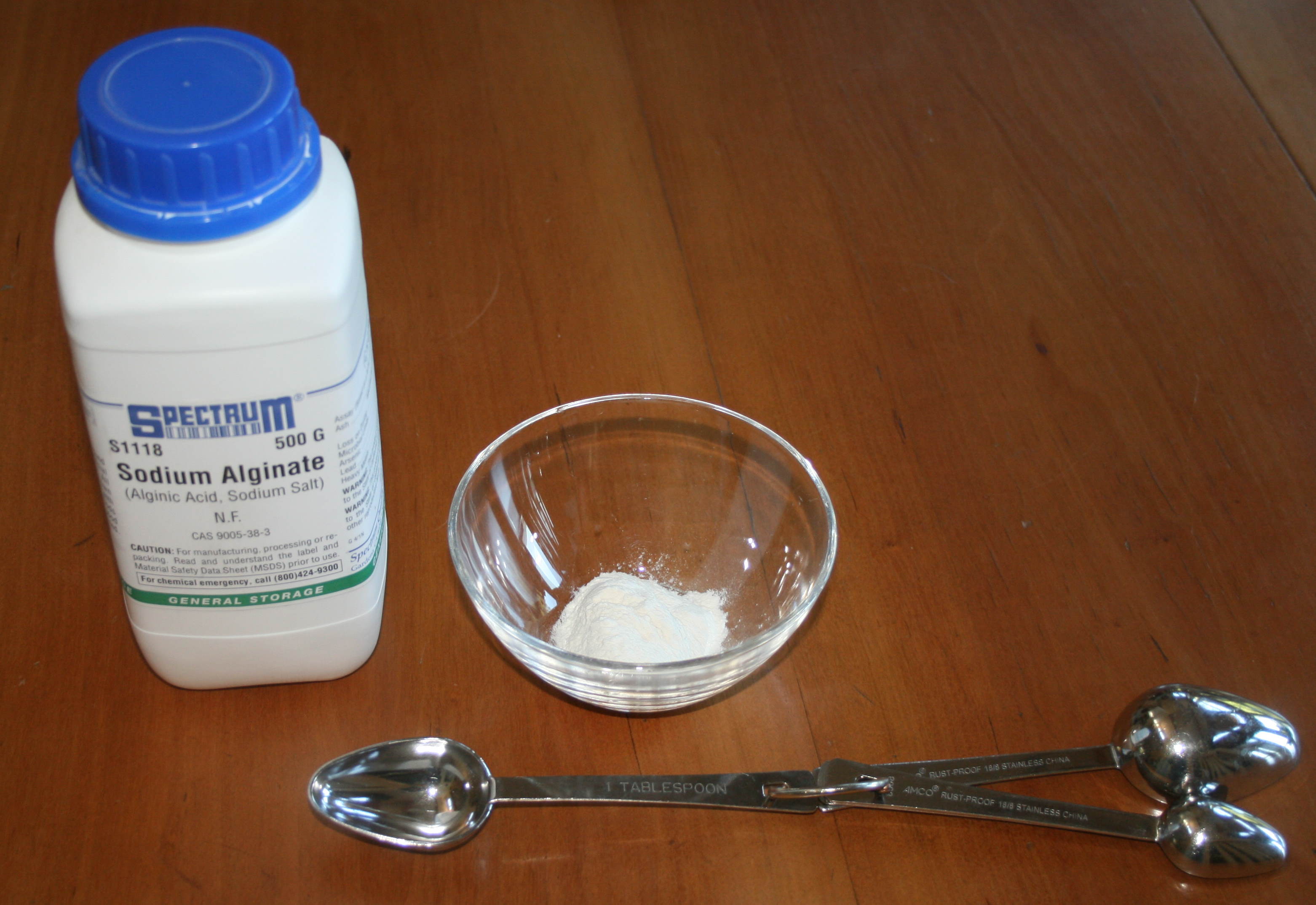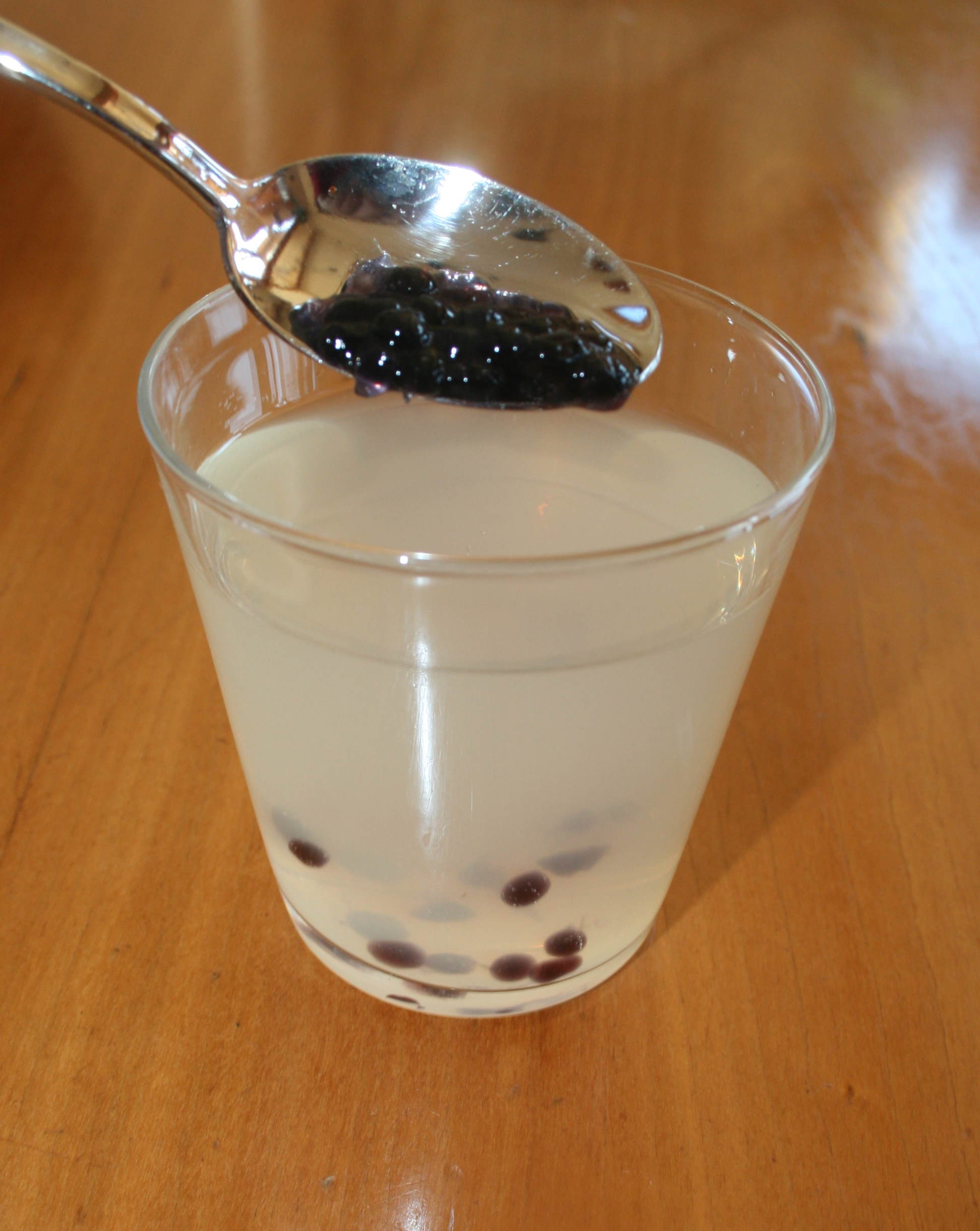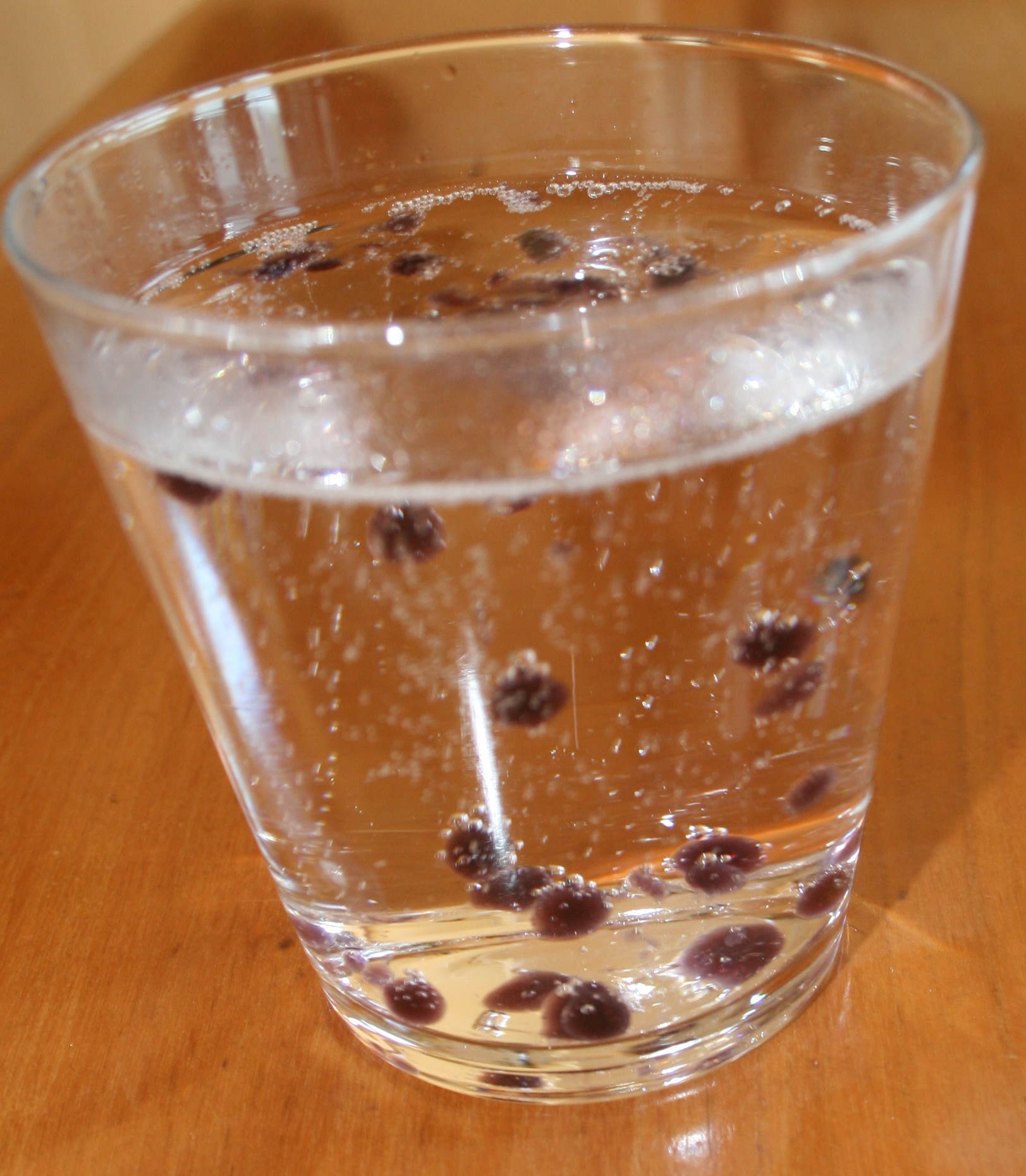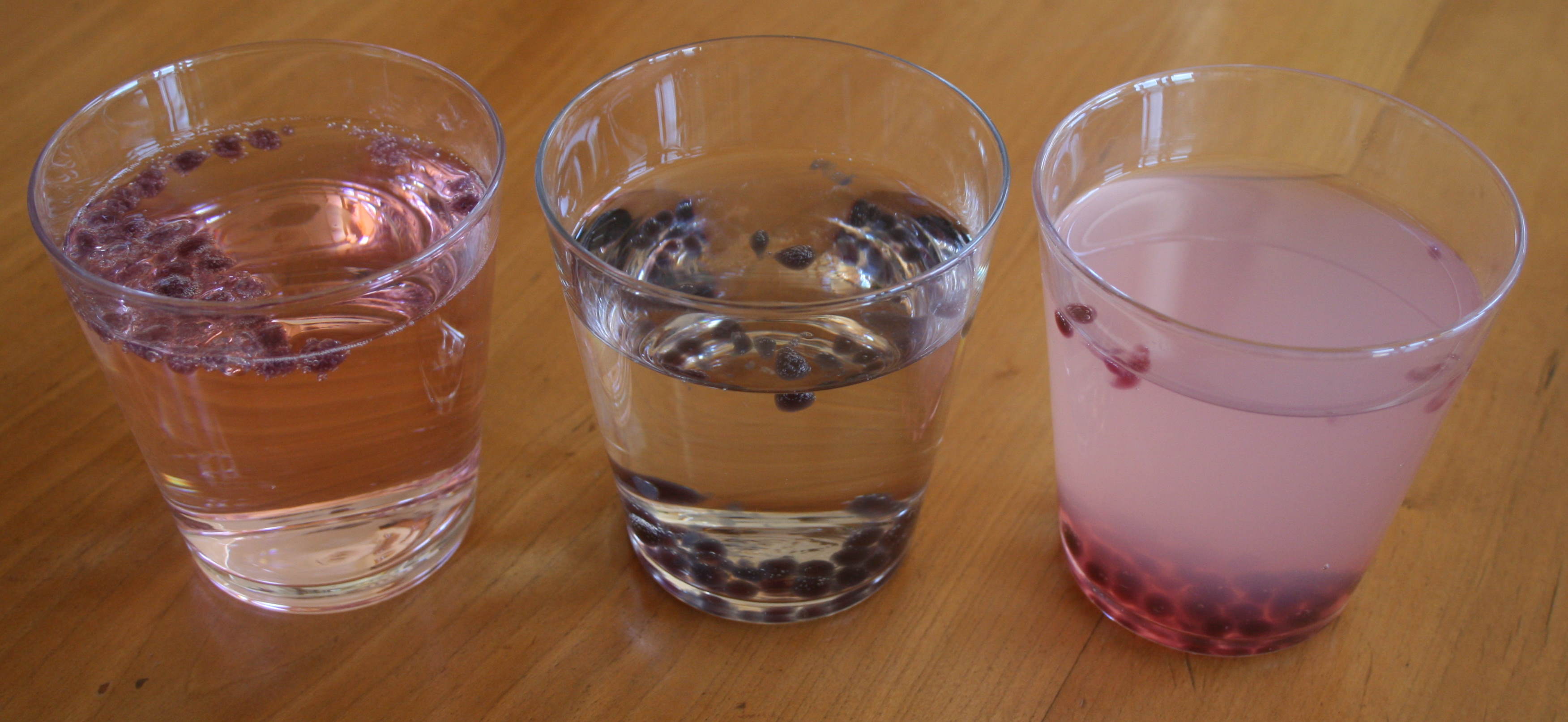Lemonade with Chameleon Eggs
A popular topic in cooking these days is a neat trick for making little balls of gel that look like caviar or salmon eggs. They are made out of a gelling agent called sodium alginate. This compound is extracted from kelp, and when added to water makes a thick syrup.
When calcium ions are added to this syrup, they exchange with the sodium, and a tough gel forms. Using an eyedropper or a pipette to let the syrup fall into a solution of a calcium salt a drop at a time makes wonderful little balls of gel that look like fish eggs or frog eggs.
We take that trick a step farther and make these little eggs slowly change color from blue to red when they are stirred into a glass of lemonade. We do this by using the anthocyanin pigments from the skins of red grapes as an pH indicator. We start the eggs out at a neutral to slightly alkaline pH, and let the acid in the lemonade bring the acidity up until the anthocyanins turn from blue to red.
You can buy sodium alginate at health food stores for about $4 for a 2 ounce jar, which is six times as much as this recipe needs. Or you can buy it on the Internet by the pound, for about $40 a pound, and it will keep for years. We use a tablespoon of powdered sodium alginate, which is about 9 grams (a third of an ounce).

What you need:
- 1 tablespoon sodium alginate
- 1 tablespoon granulated sugar
- 1 to 2 teaspoons of baking soda
- 1 bottle of pure grape concentrate (10 to 16 fluid ounces
- 1 teaspoon of calcium chloride (calcium salt)
- 3 antacid tablets (magnesium hydroxide) with or without extra calcium.
- An eyedropper or pipette
If your grape juice is frozen, let it thaw until it is liquid. You want to make sure the juice has not had extra acid added to it. If you can’t find concentrate, you can use regular grape juice. The result will still be good, but it will not burst on the tongue in quite the same way.
Next mix the sodium alginate and the sugar together. This will make it a lot easier to dissolve the sodium alginate in the liquid. Since the alginate will start to gel as soon as it gets wet, it will form clumps and lumps that will take a lot of stirring and mashing to get to dissolve. The sugar helps by letting the liquid get into the mass of powder.
Next we want to neutralize the acid in the grape juice, without going so far that we can taste the baking soda. The alginate will not dissolve in an acid liquid, and we want the grape juice to be quite blue in color, as it gets when it has a neutral pH. Add the baking soda one eighth of a teaspoon at a time, and stir until all the bubbles have disappeared before adding the next eighth teaspoon. At some point you will notice that fewer bubbles came up from that last bit of baking soda. This is the time to stop. We don’t need to go all the way to neutral. Be patient. Waiting for the bubbles to go away can take a while. Don’t be tempted to use the antacid tablets instead of the baking soda – they will cause the alginate to solidify immediately.
Put the alginate powder and sugar in a jar, and pour the liquid grape concentrate on top, and begin to stir. We use a jar so that once the main lumps have been broken up with the spoon, we can put a lid on it and shake it. Even with all this trouble, we will have to let the mixture sit for an hour or two to let the gel fully hydrate. Overnight is even better. Plan ahead, and do this part the day before you want to impress your friends.
When the powder has all dissolved into a somewhat thick syrup, dissolve the calcium chloride and crushed antacid tablets in a large glass of water (12 to 16 ounces). Stir well, and leave the solution swirling for the next step.
With the eyedropper or pipette, suck up some of the grape syrup, and hold it above the antacid solution so that single drops can be squeezed out to fall into the antacid. Don’t let the eyedropper touch the antacid, or the syrup will begin to gel in the eyedropper and clog it up.
The drops might be red or purple as they form spheres in the antacid solution. Leave them in the solution until they turn blue. Then you can remove them with a slotted spoon, or pour the solution through a strainer into another glass. The chameleon eggs will remain in the strainer.
We will want a teaspoon of eggs for each glass of lemonade. This will take a few minutes to make using the eyedropper. If you are planning a big party, you may want to purchase a portable shower head with a hose at a hardware store, and make a lot of drops at a time.

Serve the eggs in a spoon next to the glass of lemonade. Your guests can then stir them into the lemonade, and watch them slowly turn red during the meal.
Putting them in a lemon-lime soda also works, and they are not only easier to see, but the carbonation makes the eggs float up and down as the bubbles first attach to the egg and make it rise, and then pop when it reaches the top, letting them fall back down. They act like little submarines.

Here is a shot of the eggs in three different liquids. On the left is lemon-lime soda, in the middle is plain water, and on the right is lemonade.

You can see the eggs floating on the left, and mostly sinking on the middle and right. But look at the colors – the middle ones are still blue, but the left and right have turned pink from the acid in the drink.
Chameleon eggs will keep for a long time in a jar in the refrigerator.
If you want a quicker treat, without the color change, try adding alginate to strawberry syrup and dropping that a drop at a time into calcium chloride solution. You get pink caviar that tastes like strawberry syrup. Serve it on a spoon, or spread it on cream cheese with crackers.
